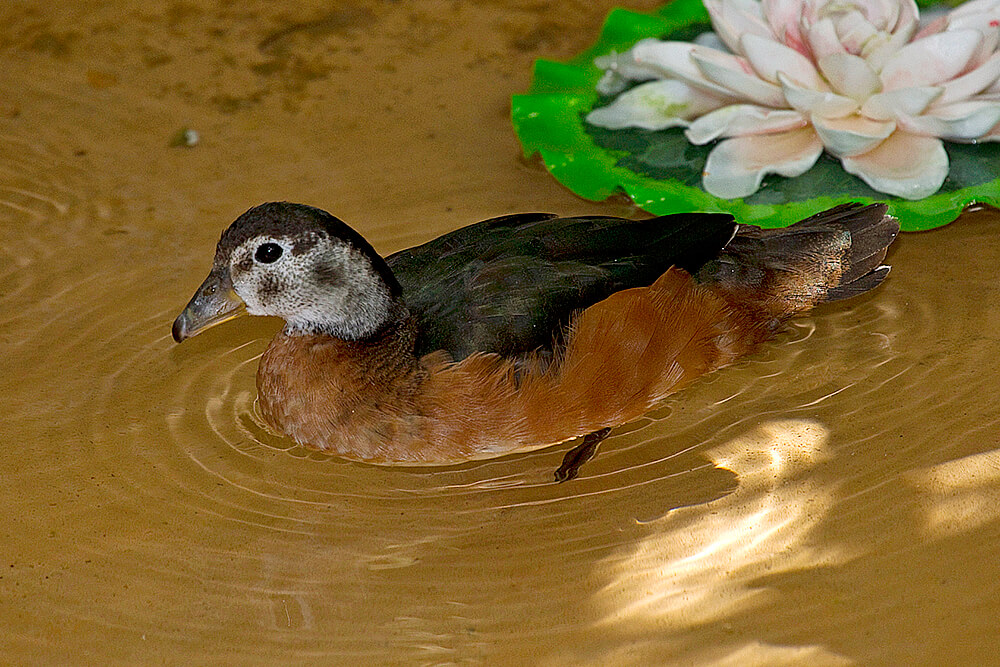African Pygmy Goose
ABOUT

Goose or Duck? The African pygmy goose is a type of “perching duck” due to its stubby bill. It is widespread throughout sub-Saharan Africa and Madagascar. While its beak is more like that of a goose, the pygmy goose is actually a type of dabbling duck.

There are three distinct species: the green pygmy goose of Australia, the cotton pygmy goose of Asia, and the African pygmy goose. The African pygmy goose is the smallest of the three, and is the most eye-catching. Males have a white face with green ear patches and metallic green on their back, and a striking yellow beak; females are grayish with dark eye patches and greenish on top of their head. Both have lovely golden brown feathers on the side.
HABITAT AND DIET
Watery home. African pygmy geese can be found in swamps, marshes, inland deltas, shallow lakes, pools, floodplains, slow moving rivers, and occasionally coastal lagoons in parts of Africa.
The African pygmy goose usually nests in tree cavities, but occasionally nests on the ground, in termite mounds, and even thatched roofs. Nests are made of grasses and leaves, and sometimes feather down is added. Males take an active role in nest site selection and appear to actively encourage the female to inspect the nest box. Wildlife care specialists say the African pygmy goose makes a serious scrape and a more elaborate nest than any other waterfowl.
As small “perching ducks,” they are mainly sedentary, but prone to dispersal movements following food and water availability. They also groom their feathers and swim around looking for food.
African pygmy geese are seedeaters, especially seeds from water lilies and vegetative parts of other aquatic plants; aquatic insects and small fish may also be consumed. At the Zoo, they may eat waterfowl pellets and small seeds, along with aquatic plants like duckweed.
FAMILY LIFE
Breeding season is variable with season and locality. The birds pair up and build a nest out of grasses and leaves, sometimes lined with down. Unusual among geese, they nest above ground in tree boles and other cavities. They share the unducklike behavior of nesting in trees with the colorful Mandarin duck and the wood duck. They will use nest boxes as an alternative.
The female lays 6 to 12 creamy-white eggs between mid-May and August. The eggs are incubated for just over three weeks. Chicks have blackish down with white spots on top, and white down on their bellies.
African pygmy geese are shy and secretive, fleeing to thick brush when disturbed. Little is known about its communication.

CONSERVATION
While some populations of pygmy geese are increasing, others are falling throughout its wide range. Dams have created the shallow, weedy waters they prefer, while other areas with introduced fish like tilapia and Nile perch, which have changed the local aquatic plant communities, have caused the birds to abandon degraded habitats. The pygmy goose is hunted in Madagascar.
Though the pygmy goose is listed as stable through much (but not all) of its habitat, keeping waterways clean and pollution-free is a good way we can all help the pygmy goose and other waterfowl around the planet.
By supporting San Diego Zoo Wildlife Alliance, you are our ally in saving and protecting wildlife worldwide.





